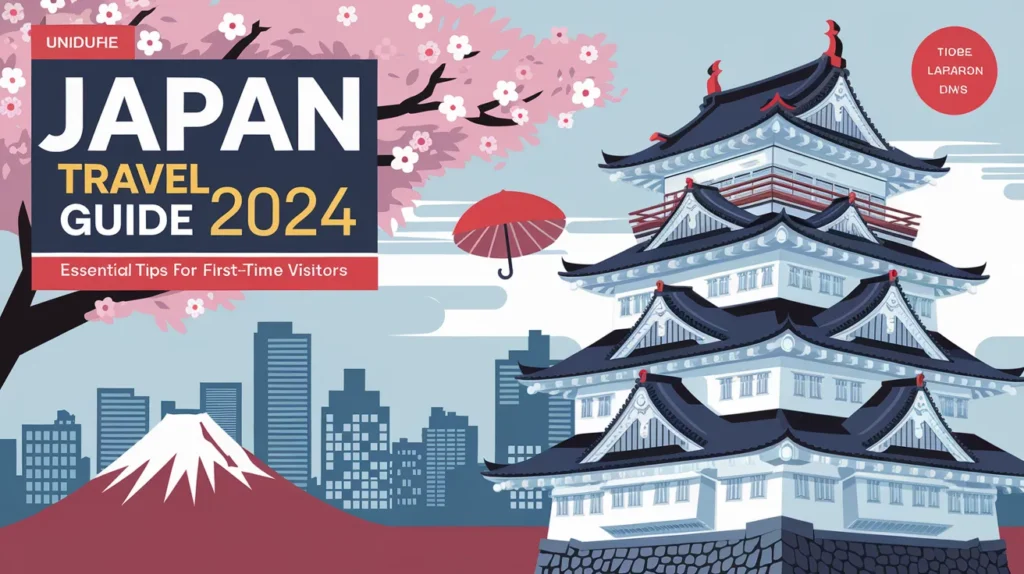
Introduction
Planning a trip to Japan in 2024? Look no further! In this comprehensive Japan travel guide for first-time visitors, we will provide you with essential tips and information to make your journey a memorable one.
Understanding Japanese Culture
Etiquette and Manners to Observe
When visiting Japan, it is crucial to be aware of the country’s unique etiquette and manners. Bowing is a common form of greeting and showing respect. A slight bow is appropriate for casual encounters, while a deeper bow is reserved for more formal situations. It’s also important to remove your shoes when entering someone’s home or traditional establishments like temples and traditional ryokan.
Additionally, exchanging business cards is a customary practice in Japan. When presenting and receiving a business card, use both hands as a sign of respect.
Understanding Japanese etiquette goes beyond just bowing and shoe removal. In Japan, it is considered impolite to point with your fingers, so it’s best to gesture with an open hand. Moreover, when dining with chopsticks, avoid sticking them upright in a bowl of rice, as this resembles a funeral ritual.
Language Basics for Travelers
While English is not widely spoken in Japan, knowing a few basic phrases can greatly enhance your travel experience. Learn common greetings such as “Konnichiwa” (hello) and “Arigatōgozaimasu” (thank you) to show your appreciation.
Consider carrying a phrasebook or downloading a translation app to help you navigate day-to-day situations, like ordering food or asking for directions. Japanese locals will appreciate your efforts to communicate in their language.
Learning Japanese language basics can open up more opportunities for cultural immersion. Understanding simple phrases like “Sumimasen” (excuse me) and “Oishii desu” (it’s delicious) can lead to meaningful interactions with locals and a deeper appreciation for Japanese customs.

Preparing for Your Trip
Visa Requirements and Procedures
Before traveling to Japan, it’s important to check if you require a visa for your stay. Depending on your nationality, the visa requirements may differ. The Embassy of Japan in your country can provide you with the most up-to-date information regarding visa applications and procedures. It’s advisable to apply for your visa well in advance of your travel dates to avoid any last-minute complications.
Health and Safety Preparations
Prior to your trip, it’s essential to take care of your health and safety preparations. Travel insurance is highly recommended to cover unexpected medical expenses or trip cancellations. Ensure that your routine vaccinations are up to date, and consult your healthcare provider regarding any additional vaccines or health precautions for your specific travel itinerary.
When packing for your trip, make sure to include comfortable walking shoes and appropriate clothing for the season. Japan experiences distinct weather changes throughout the year, so research the climate of your chosen travel dates and pack accordingly.
Read More: The Best Porn Games for Adults
Navigating Japan’s Transportation System
Understanding the Rail System
The rail system in Japan is renowned for its efficiency and coverage. It’s advisable to obtain a Japan Rail Pass if you plan to travel extensively within the country. This pass allows unlimited travel on most JR trains, including the famous Shinkansen bullet trains, for a specified period of time.
When using the rail system, it’s important to familiarize yourself with common etiquette. Queueing is a common practice, so wait patiently in line. Inside the trains, silence and courtesy are greatly appreciated, so refrain from talking loudly or using your phone. Seats designated for elderly, disabled, or pregnant passengers should be offered to those in need.
Tips for Using Taxis and Buses
Taxis are readily available in Japan but can be expensive for long-distance travel. Consider using taxis for shorter distances or when traveling with heavy luggage. Bus travel is another convenient option, especially for exploring more rural areas not easily accessible by train. Bus routes and schedules can be found at bus stations or through online resources.
When using taxis or buses, have your destination address written in Japanese to show the driver or bus operator. It’s also common to pay for these services in cash, so make sure to have enough local currency on hand.
Exploring Japan’s Major Cities
Must-Visit Spots in Tokyo
Tokyo, Japan’s bustling capital, offers a myriad of attractions for visitors. Shibuya Crossing, one of the world’s busiest intersections, is a must-see sight. Visit the historic Meiji Shrine and immerse yourself in the tranquility of its surrounding park. The Tsukiji Fish Market is a paradise for seafood lovers, offering an array of fresh sushi and seafood delicacies.
Don’t miss the opportunity to experience the vibrant nightlife in Shinjuku or the traditional atmosphere of Asakusa with its iconic Sensō-ji Temple. Tokyo’s diverse neighborhoods ensure there’s something for everyone to enjoy.
Discovering the Charm of Kyoto
Kyoto, the cultural heart of Japan, is renowned for its timeless beauty and rich heritage. Explore the iconic Kiyomizu-dera Temple and enjoy breathtaking views of the city from its wooden terrace. Take a stroll through the picturesque Arashiyama Bamboo Grove or visit the serene Ginkaku-ji Temple with its famous silver pavilion.
Immerse yourself in traditional Japanese culture by experiencing a tea ceremony or taking part in a kimono rental experience. Kyoto’s traditional charm and tranquil ambiance will transport you to another era.
Experiencing Japan’s Cuisine
Popular Japanese Dishes
Japanese cuisine is celebrated worldwide for its freshness, presentation, and umami flavors. Indulge in sushi and sashimi, where the delicate flavors of raw fish take center stage. Try ramen, a comforting bowl of noodles in flavorful broth, or tempura, light and crispy battered and fried seafood or vegetables.
Don’t forget to explore regional specialties as you travel through Japan. Try the okonomiyaki in Osaka, a savory pancake filled with various ingredients, or the hakata-style tonkotsu ramen in Fukuoka, known for its rich and creamy pork broth.
Dining Etiquette in Japan
When dining in Japan, there are a few cultural norms to observe. Before eating, it is customary to say “itadakimasu”, which expresses gratitude for the meal. Use chopsticks with confidence or ask for a fork if needed. Avoid sticking chopsticks vertically into your food, as this is reminiscent of funeral rituals.
Show appreciation for the food and service by saying “gochisōsama deshita” after finishing your meal. It’s also customary to leave a small amount of food on your plate to indicate that you are satisfied. Tipping is not practiced in Japan, as exceptional service is considered standard.
With these essential tips for first-time visitors, you’re ready to embark on a remarkable journey through Japan. Immerse yourself in the country’s rich culture, explore its vibrant cities, indulge in its delectable cuisine, and create memories that will last a lifetime. Safe travels!






